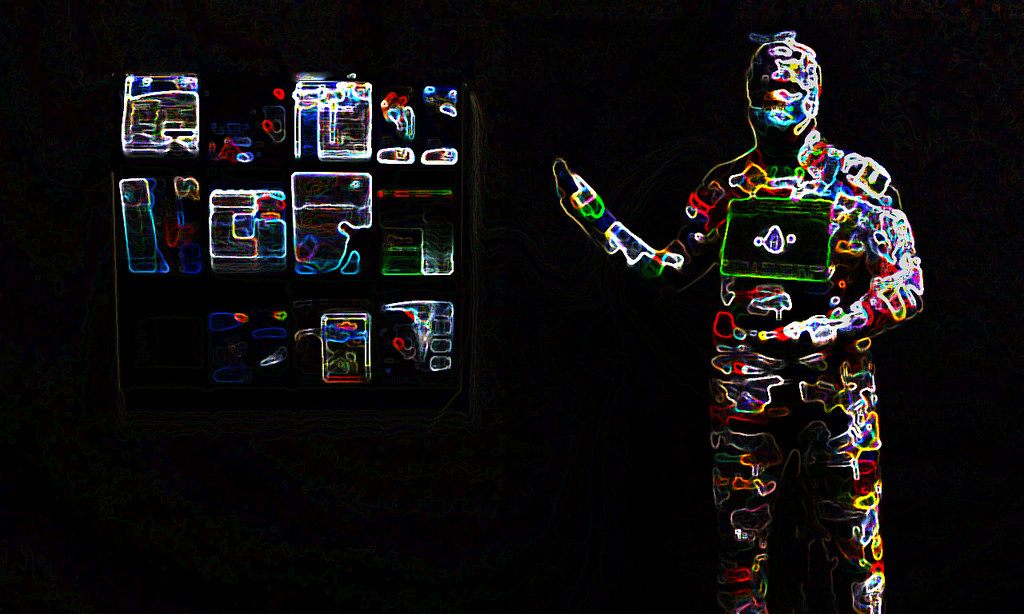
by Don Basile | Feb 27, 2017 | Tech
“If only they could talk.” How many times has an animal lover, or a farmer, lamented over this lack of communication?
What if there were technology available that didn’t quite let animals talk, but it did allow for information—lots of it—to be shared? Today’s wearable and ingestible technology for animals is doing just that, in ways large and small.
On the home front, one study showed that microchipping a pet meant that it was more than twice as likely for that pet to be reunited with its owner, if found and turned over to a shelter.
But microchips, which are simple, implanted, identification devices, are the tip of the animal tech iceberg.
GPS tracking is doing wonders for preservation and conservation efforts. Since 2013, scientists have been using GPS, combined with satellite weather and terrain information (the Environmental-Data Automated Track Annotation, or Env-DATA, system) to track the migratory patterns of the Galapagos Albatross, a threatened species.
Scientists from Commonwealth Scientific and Industrial Research Organisation (CSIRO), Australia’s national science agency, put tiny GPS trackers on thousands of bees in Tasmania. The goal is to gather data about their habits (where and how far they travel) and to monitor disruptions that could indicate a problem with the swarm.
According to their website, “If we can model their movements, we’ll be able to recognize very quickly when their activity shows variation and identify the cause.
This will allow farmers and fruit growers to increase the benefit received from this free pollination service, and will also allow us to monitor for any biosecurity risks such as Varroa mite.”
Health is key not just in migratory or at-risk animal populations, but also in farm animals where illness can spread rapidly and cause huge losses quickly.
iNOVOTEC Animal Care has created a stomach sensor (as in, it’s in the cow’s stomach) that enables farmers to catch illnesses earlier, making for healthier lives for the livestock, and saving money.
The system is able to track pH, temperature, estrus—essentially most of the information needed to proactively deal with any health problem or concern.
RFIDs (Radio-Frequency Identification), the small electronic devices that consist of a small chip and an antenna, are being used to huge advantage in India’s dairy industry.
From the home front of pet identification, to the migratory world of the birds and the bees, to the huge industry of dairy farming, it’s clear that the better the technology and data, the better the problem-solving.

by Don Basile | Feb 24, 2017 | Sports, Tech
Among the most intriguing innovations in wearable technology is high-tech clothing. Will we all be decked out in smart clothes from head-to-toe in the future? Will our shirts and sneakers be collecting data and making suggestions? Some people think so, and it could be athletes that are the first to roll up their sensored sleeves and getting down to business.
Companies are already designing high-tech clothing for athletes. For example, take “e-skin” by the wearable tech company Xenoma. This smart shirt tracks gestures and makes suggestions on form to athletes.
How does it work? E-skin is made with Printed Circuit Fabric, which has stretchable sensors and wires embedded into the textile during manufacturing. A centralized “hub” sits in the middle of the shirt, able to transmit data to a smartphone, tablet, or other devices.
Xenoma offers an e-skin software development kit so that developers can create apps that take advantage of e-skin’s innovative capabilities. The kit starts at $5000.
One use of e-skin that you can witness on video? E-skin for golfers. The shirt succeeds in analyzing the wearer’s swing, form and stance. Then it provides feedback to help the athlete improve. It could do much the same for any sport.
Xenoma also showed off e-skin this January at the Consumer Electronics Show (CES), this time for its gaming capability. Able to record data at 60-frames a second, e-skin can translate your movements into digital form, animating game characters on screen.
What more do you need from e-skin? Try machine washable (check), rechargeable (check), and long-lasting (it has a four-hour battery life). Xenoma is expected to release a consumer version for around $600 by mid-2017.
For gamers, especially of the VR variety, it could be an amazing way to get an immersive and active experience out of gaming. I expect it will be even better for athletes, acting as a very personal trainer that knows your body better than you do. For the rest of us, it can remind us to breathe and relax, let us know if our posture is poor, and encourage us to live a more active lifestyle.

by Don Basile | Feb 15, 2017 | Sports, Tech
Every year, the Consumer Electronics Show unveils the hottest new tech products and trends, which predictably leave tech junkies drooling with anticipation. This is just as true for sports technology, which makes its debut in various iterations at CES to the delight of those like myself with interest in this growing field.
2017’s CES opened on January 5 in Las Vegas with just as much fanfare as usual, and with it a slew of amazing new products.
FitBit, which recently acquired Pepple, unveiled its new personal trainer app. It is also partnering with nutrition app Habit, indoor training bike company Peloton, and VR sports pioneer VirZOOM, and even Uber — though we may just have to wait and see what comes of these. Nonetheless, FitBit has proven itself an industry leader in athletic wearable tech.
Another product that cropped up at CES was Athlete Recovery Sleepwear, introduced by Under Armor. In partnership with Tom Brady, Under Armor’s product promises to help regulate body temperature and improve sleep for better daytime performance.
Other smart apparel at CES include the Pro Team Shirt, which comfortable operates as a heart monitor and GPS, a smart baseball training shirt from SwingIQ, and a smart running shoe by Sensoria and VIVOBAREFOOT.
Biometric data wearables are also proving to be a trend, and the less visible, the better. According to Sports Illustrated, a trend called “hearables,” as demonstrated by in-ear data trackers by Bodytrak, KUAI, and the Dash. These small devices are perfect for collecting internal metrics, like core body temperature, while also having the ability to play music. Fun!
All in all, it looks like another successful CES for athletes and for fans. It’s clearer than ever that as technology gets more advanced, so does the athletic prospects and fan experience of those that adopt it.

by Don Basile | Dec 28, 2016 | Tech
If high stress levels tend to rule your days and you’re committed to living a healthier lifestyle, technology may be able to help you out. Cigna has unveiled the Cigna Virtual Relaxation Pod that gives you a chance to escape reality for a while — a two-minute break that works to push the reset button on your day.
The pod makes use of virtual reality technology using the Oculus Rift headset and headphones. You’ll enter a sound-insulated environment for a multi-sensory experience. The entire experience induces a state of mindfulness and relaxation, an opportunity to explore a virtual environment with expert-guided meditation. You’ll be locked in a sound-insulated pod and all you need to do is sit back, relax, and breathe deeply. You get to choose your environment: a Zen garden, a tropical beach, or a woodland campsite. You’ll go on a two-minute sensory journey that allows you to just let go, escaping from reality to experience a state of mindfulness.
In an interview with Medical Daily, Cigna Solution Architect Rachel Stein shares that Oculus technology helps transport the user to a relaxing environment where they can take advantage of the benefits of mindfulness therapy. The pod engages all the senses, making you aware of your current state of mind. The guided meditation helps you maintain a state of mindfulness, peace, and calm, in a relaxing setting.
The team behind the Cigna Virtual Relaxation Pod are hoping to see the pod installed inside hospital lobbies and other places where people tend to feel tense, nervous, or anxious. Just a couple of minutes in this pod can promote a meditative state which helps induce a state of calm and natural relaxation.
Would you be first in line to settle in to a virtual relaxation pod? Innovative experiences like these could be the next generation of health and wellness. Virtual reality can control the mind and in ways that make significant changes to our health and well-being.

by Don Basile | Dec 26, 2016 | Sports, Tech
As technology becomes omnipresent in people’s lives–people go about their lives smartphone in hand–it follows that we would no longer have to carry technology, but simply slip it on. Smartwatches and fitness trackers are the first widespread wave of wearable technology, but they certainly will not be the last. These wrist devices are already gathering vast amounts of information about their wearers that can be translated into lifestyle research, which will inevitably lead to even more convenient tech accessories.
The trick with wearable technology, however, has not been ease of use, but style. The trendsetters who pioneer new fashion styles could also pave the way for wearable tech, but it will need to look the part. The contradiction is in the name: for technology to be wearable, it will need to look enough like fashion. But tech geeks have never been known as fashion plates, so what happens when these two worlds collide?
For decades, Apple has been the frontrunner for sleek product design, and indeed, their Apple Watch–like their phones–can now command a wait. However, a wearable not only needs to look good enough to be shown off, but needs to function well enough to become essential. Otherwise, why wear it in the first place? Fashion is famously ephemeral, but wearable technology cannot afford to be so short-lived. Although new models will be released, both the functionality and aesthetic need to meet certain standards for wearable tech to be fully integrated into people’s lives.
Wearable technology also offers a valuable service to athletes that could make it a functional part of sports uniforms. Major League Baseball players experimented with wearable technology this past year on a voluntary basis. Approved devices were evaluated and tested before they were allowed on the field, and rules govern the gathering and use of information. But wearable technology could greatly help athletes and their support staff monitor players’ health and performance when they are most active.
Technology isn’t going away, which means it will likely become even more integral to our daily lives. What better way to weave technology into the day-to-day than by wearing it?




